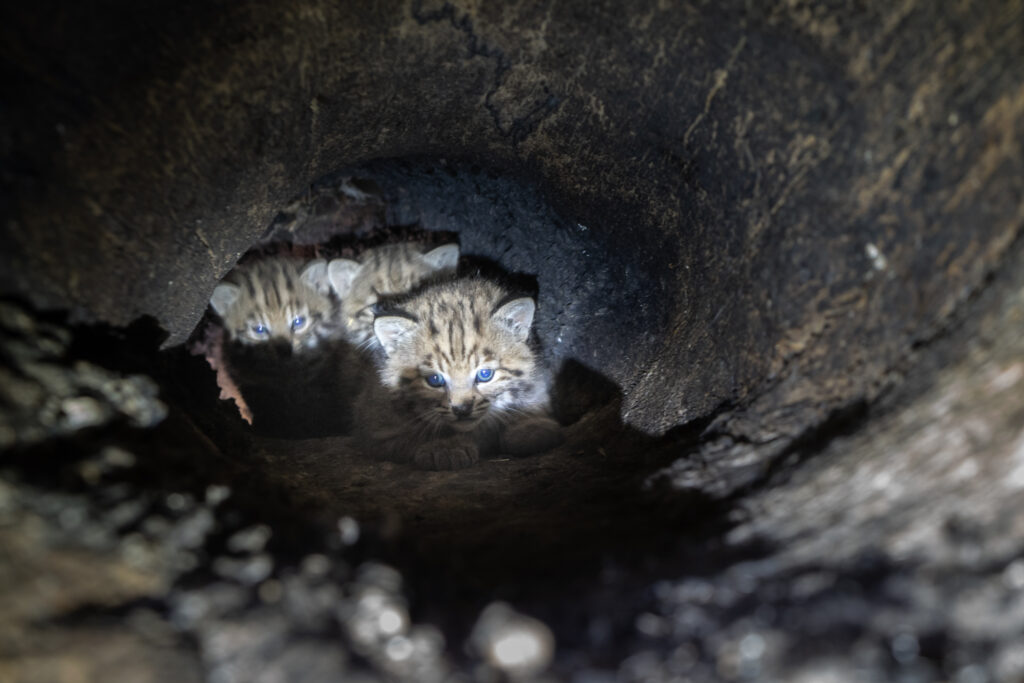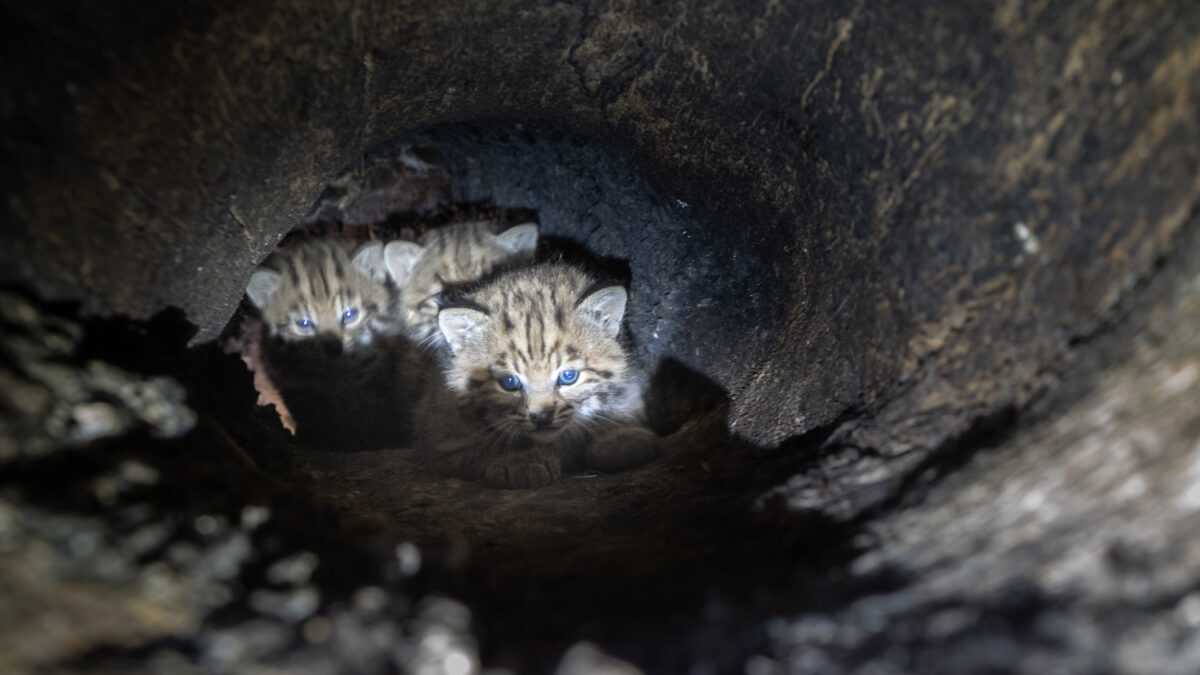
A bobcat that is part of the National Park Service’s monitoring program recently gave birth to three kittens. Instead of making a den in the shelter of deep brush, this enterprising mama chose to have her babies in a hollow tree.
Biologists suspected that B-370 was “denning” because she repeatedly returned to the same spot, an indication that a female has likely given birth. However, when they arrived on-site, they had trouble locating the den because it wasn’t in a typical location.
“I swear she’s in this tree, but I can’t find her,” biologist Joanne Moriarty recalls saying into her hand-held radio to another biologist nearby. “Then I look up into this little tiny hole in the tree, and her face is just poking out at me. Of course, she’s been staring at me the whole time. I just happened to be in the right spot.”
Moriarty used a remote camera held on an extension pole to peek into the tree to confirm the presence of a bobcat and three kittens. The biologists then left the area and returned the following day while the mother was away from her den.
Using a ladder, biologists captured the kittens—B-379, B-380, and B-381—and brought them down safely, one by one. The kittens were weighed, measured, and given a general health check by researchers. They were also ear-tagged for the purpose of future identification before being returned to their tree cavity home.
Moriarty has been studying bobcats in the area for 17 years, and she says what is striking about this den is its location. Dens are often in hollow areas found in thick brush, specifically in chaparral or coastal sage scrub vegetation. The second most common location for bobcat dens is in woodrat nests, the large piles of sticks and leaves that woodrats build and live in for generations. Denning in a tree is unusual, she said.
Scientists believe the bobcat used the tree cavity as a den because much of the existing natural habitat in the surrounding area was destroyed after the Woolsey Fire. Very little vegetation has grown since the devastating fire destroyed close to half of the natural area in the Santa Monica Mountains and about 2/3 of the natural habitat in the Simi Hills.
An average bobcat litter size is two to three kittens. The sex ratio overall in litters are generally split, 50/50 male and female. B-370’s litter had one female and two males. These kittens weighed in at 500-600 kg, and they were estimated to be about 30 days old.
Bobcat kittens typically stay in the den where they were born for four to five weeks. Then the family will move on to other dens, staying safely under cover for the first 12 weeks, when the kittens are old enough to accompany mom when she hunts.
The mother cat cares for her kittens for the first nine to 11 months of their lives, teaching them to hunt and fend for themselves. Even when they become independent, they will still occasionally check in with mom.
To learn more about the bobcat study, visit https://www.nps.gov/samo/learn/nature/bobcats.htm





